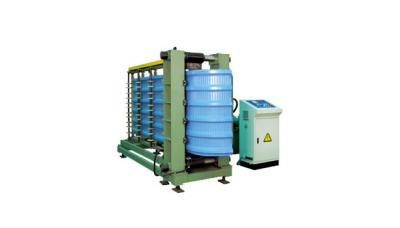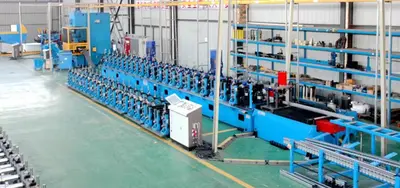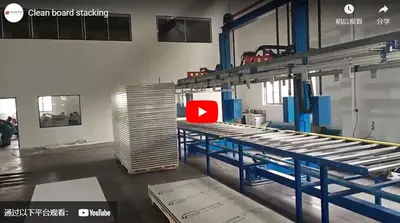Rock Wool Production Line: Equipment with High Efficiency
Rock Wool Production Line is equipment used for producing rock wool boards. Rock wool board is a fiber material made from the melting of natural rock minerals, possessing excellent insulation and thermal properties. It is widely used in construction, refrigeration, decoration, and other fields. The Rock Wool Production Line, after years of research and improvement, has become a highly efficient, high-automation-level modern equipment.
The Process of the Rock Wool Production Line
1. The raw material processing system is used to process rock minerals and melt them into materials for rock wool boards. The raw materials are usually rocks from mineral mines, which are processed through steps like ore dressing and crushing to convert them into suitable particle sizes, then sent into the melting furnace for melting. The melting furnace is a special device capable of heating rock particles to high temperatures to melt them into rock wool. The melting process requires a large amount of thermal energy, usually using gas or oil for heating.
2. The melted rock wool is cooled down by the fiber cooling system to reach a suitable forming temperature. The fiber cooling system uses cooling air or water for cooling, where the cooling air or water is sprayed onto the melted rock wool through nozzles for rapid cooling. The cooled rock wool fiber is soft, fine, and easy to shape.
3. The forming machine is the most critical part of the Machine Rockwool Production Line. The forming machine typically adopts a continuous production method, sending the cooled rock wool fibers into the forming machine, where they go through a series of processes like extrusion, shaping, and curing to finally produce uniform, dense rock wool boards. The forming machine operates at high speed and high automation level, enabling highly efficient production.
4. The formed rock wool board needs to be cut by cutting equipment. The cutting equipment typically uses cutting blades or cutting wires to cut the rock wool boards into the required sizes. The cut rock wool boards need to be dried to remove residual moisture and improve the quality of the rock wool boards.
5. The dried rock wool boards enter the packaging equipment for packaging. Packaging usually uses plastic film packaging or compressed packaging to protect the quality of the rock wool boards and facilitate transport and storage.
Advantages of the Rock Wool Production Line
The Rock Wool Production Line has many advantages. Firstly, the production line has a high level of automation, enabling continuous production, increasing production efficiency, and reducing labor costs. Secondly, the production process is reasonable and stable, ensuring the stability of the rock wool board quality. Additionally, the rock wool production line can adjust the parameters of the rock wool board, like thickness and density, according to different needs, to adapt to different usage environments.
In conclusion, the Rock Wool Production Line is a highly efficient, highly automated equipment capable of achieving continuous production of rock wool boards. The Rock Wool Production Line, through a series of processes, melts rock minerals into rock wool fibers, then forms, cuts, dries, and packages them, eventually producing complete specifications and stable quality rock wool board products.
The extensive application of the rock wool production line provides high-performance, reliable insulation and thermal materials for construction, refrigeration, decoration, and other fields.


 CN
CN
 EN
EN
 fr
fr  de
de  es
es  it
it  ru
ru  pt
pt  ar
ar  th
th  pl
pl  ro
ro 







 Call us on:
Call us on:  Email Us:
Email Us:  #1809, Jianhu Rd, Keqiao, Shaoxing, Zhejiang, China
#1809, Jianhu Rd, Keqiao, Shaoxing, Zhejiang, China 